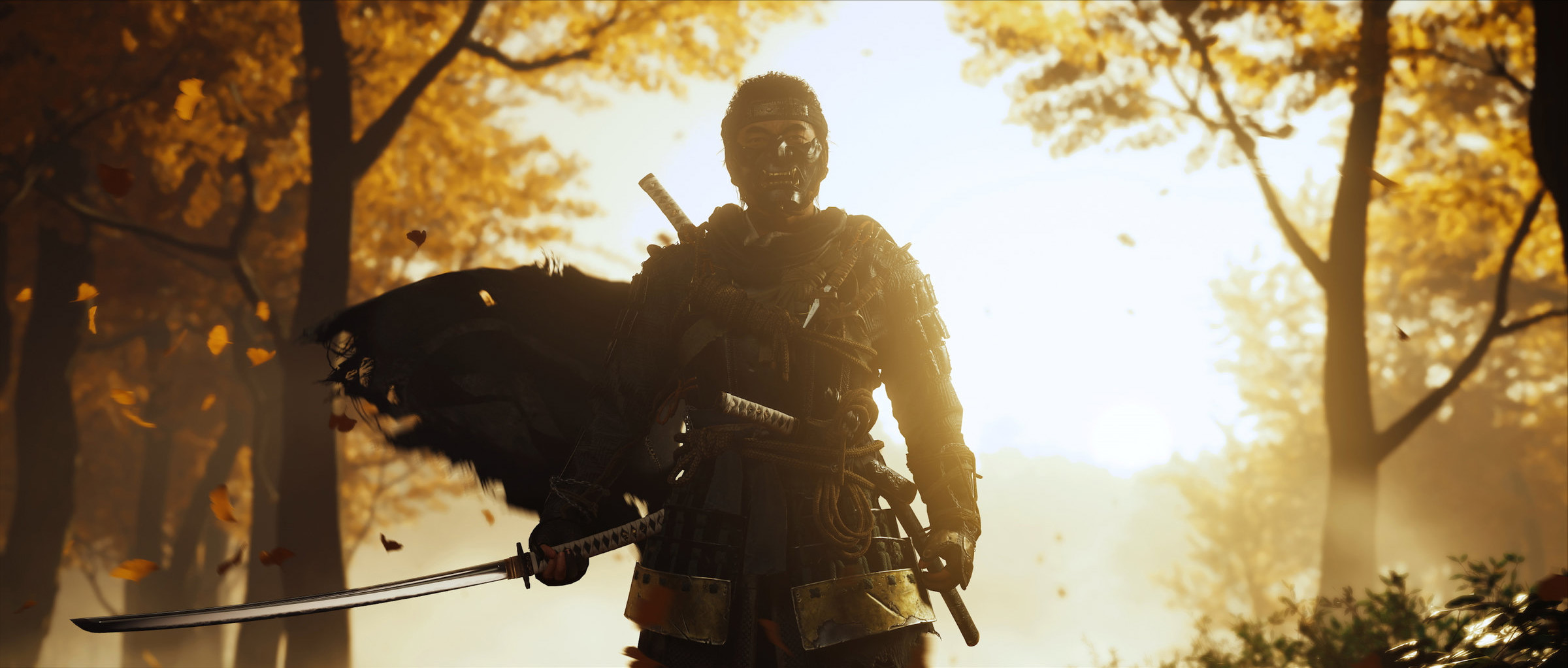
Contents
- Introduction
- Samurai Shading in Ghost of Tsushima
- Real-Time Samurai Cinema: Lighting, Atmosphere, and Tonemapping in Ghost of Tsushima
Introduction
After finishing work on Ghost of Tsushima, I was lucky enough to fulfill one of my life goals (twice over!), by giving a couple of SIGGRAPH talks. The first was in 2020 as part of the Physically Based Shading in Theory and Practice course, and the second was in 2021 as part of the Advances in Real-Time Rendering in Games course. I was very grateful to have the opportunity to share the work that our team did on the game, and try to give something back to the graphics community that has shared so generously with me.
The official versions of these presentations can be found at the links above, but for posterity I’m also mirroring them here.
Samurai Shading in Ghost of Tsushima
(SIGGRAPH 2020 Physically Based Shading In Theory and Practice Course)
Abstract
In this talk, we describe some of the physically based shading research performed at Sucker Punch since the release of Infamous: First Light. This work was used in the development of the upcoming PlayStation 4 game Ghost of Tsushima, an open-world action adventure set in 13th–century feudal Japan.
First, we describe our anisotropic specular material representation, inspired by The SGGX Microflake Distribution of Heitz et al. This allows us to encode anisotropic GGX roughness with spatially-varying orientation in a single compressed texture, supporting hardware filtering and mipmapping. We also show how we use the SGGX representation to prefilter normal and anisotropic roughness maps; this allows us to preserve the appearance of anisotropic normal distributions at varying scales with no additional runtime cost.
We then present a new real-time asperity scattering model that is able to recreate the anisotropic appearance of materials such as crushed velvet. We also describe a simplified version of this BRDF (developed by Eric Wohllaib for use in our deferred renderer), suitable for representing materials such as felt and moss-covered rocks.
Next, we describe an improvement to the well-known Pre-Integrated Skin Shading technique by Penner and Borshukov via the use of mesh curvature tensors, which better approximate the geometry in the direction of scattering. We also emphasize the importance of using the correct integration method when computing lookup tables for punctual lights and spherical harmonics.
Finally, in extra slides not included in the recorded talk, we present a novel approach for authoring physically based materials at low and high spatial frequencies. The approach we developed takes the idea of traditional “detail maps” and turns it on its head, allowing artists to intuitively author large-scale variation on top of physically based tileable materials, while minimizing run-time memory and shader overhead.
Materials
- Interactive Slides; or jump directly to sub-sections:
- Static Slides
- Supplemental Material
Recording
Real-Time Samurai Cinema: Lighting, Atmosphere, and Tonemapping in Ghost of Tsushima
(SIGGRAPH 2021 Advances in Real-Time Rendering in Games Course)
Abstract
In this talk, we describe some of the graphics techniques used in the production of Ghost of Tsushima. Set in 13th century Japan, Ghost of Tsushima pays homage to classic samurai cinema with dramatic lighting, wind, clouds, haze, and fog, and features a beautiful open-world version of the island of Tsushima during the first Mongol invasion. In this talk, we will cover the diffuse and specular indirect lighting techniques used in the game including methods of computing SH irradiance probes from sky visibility data, including plausible sky and sun/moon bounce light. Next, we present our atmospheric lighting and rendering techniques, including how we lit our haze, clouds, and particles with multiple scattering. We show how to improve the accuracy of Rayleigh scattering to approach that of spectral rendering by using a custom color space for atmospheric lighting calculations. Finally, we discuss some of the tonemapping techniques we used to recreate the samurai cinema experience in-game.
Materials
- Interactive Slides; or jump directly to sub-sections:
- Static Slides